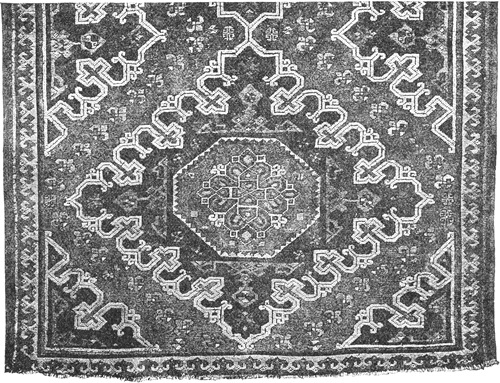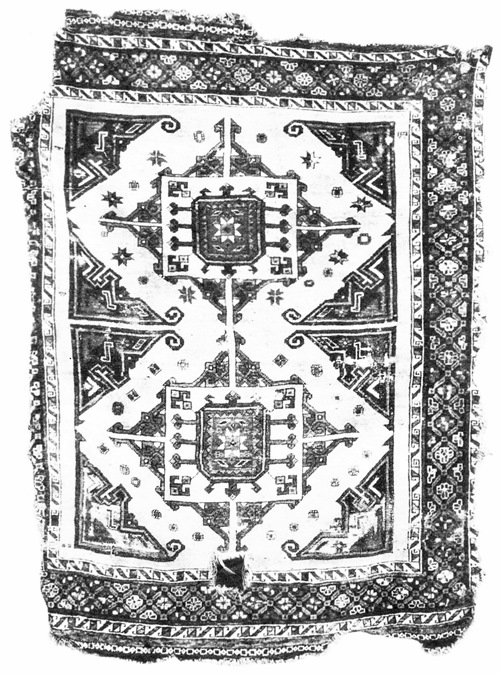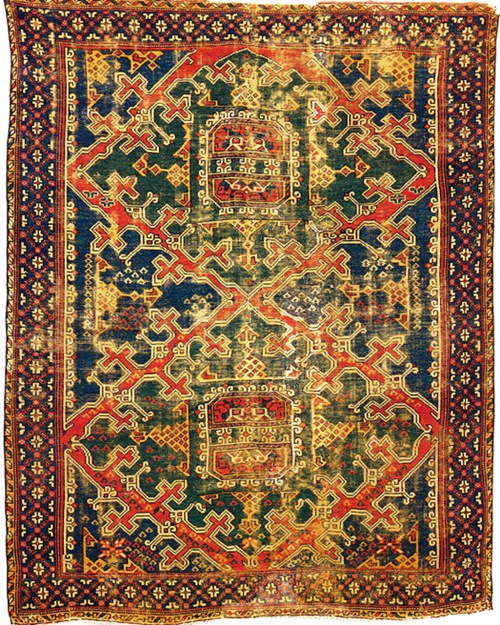Hi Pierre,
it had haunted me that I knew I had come across that rug before somewhere, and that it wouldn’t want to spring back into memory where that was. It clearly needed outside input and I decided, with a print-out of the rug in hand I would make the round at the opening evening of the 2014 Volkmann-Treffen at the Berlin Museum of Islamic Art and seek counsel with whoever of the former curators and directors of the museum whom I knew to have an expertise with rugs, that might be present. Volkmar Enderlein was the first I bumped into. He knew instantly which rug it was and agreed that it might be older than 17th c as Erdmann had suggested, and with a smile he related, that Erdmann had had a reputation for making attributions on rugs he had not seen in reality. He must have been an early Turkotekker sic!
Later, reading up what Erdmann ( 1975, 4. Aufl.) had to say about the ‘Pohlmann’ rug, which was very little beyond the fact that it belonged to a rare group, made clear by implication why he suggested such a late date for the rug, which he attributed to the Ushak area and modelled on a Bergama rug. His reference for age attribution seem to be the early geometric animal carpets and compartemented animal carpets; hence, he sees in the Pohlmann rug a later form in which the dividing line between compartements had been given up. The older compartemented form, according to Erdmann, has lived on in some Bergama and Canakkale rugs.
Next one I talked to was Jens Kröger, who also immediately recognised the rug and who suggested that Friedrich Spuhler might know more.
He actually did, and nearly flabbergasted me when he suggested that he might have been functional in the transaction of the rug or some very similar one a long time ago. He promised to look into it for me. Last week a written note arrived with references. That was as joyous as much as it dismayed me, for now I knew where I had met that rug before, in Bode and Kühnel (2. bis 4. Aufl., 1914, 1922, 1955), all editions almost at arm’s length. Bode (1902) in his first edition of the same book already had a rug included, as plate 67, that is part of the same small group:

The next one is published as plate 38 in Erdmann (1975) where it says Bergama, 18th c, TIEM; in other words there may exist a coloured picture, perhaps in the Istanbul ICOC special catalogue I didn’t have time yet to check:

Friedrich Spuhler had another reference for me to a source equally within reach that is so rich, I never had found the time to go through it page by page. So, I am especially grateful for that prompt that also leads us to a marvellous and longed for colour picture of a rug of the group (Kirchheim 1993, Orient Stars, pl. 162):

The Pohlmann rug, unfortunately, remains illusive; and so does the Bode rug.
Regards,
Horst